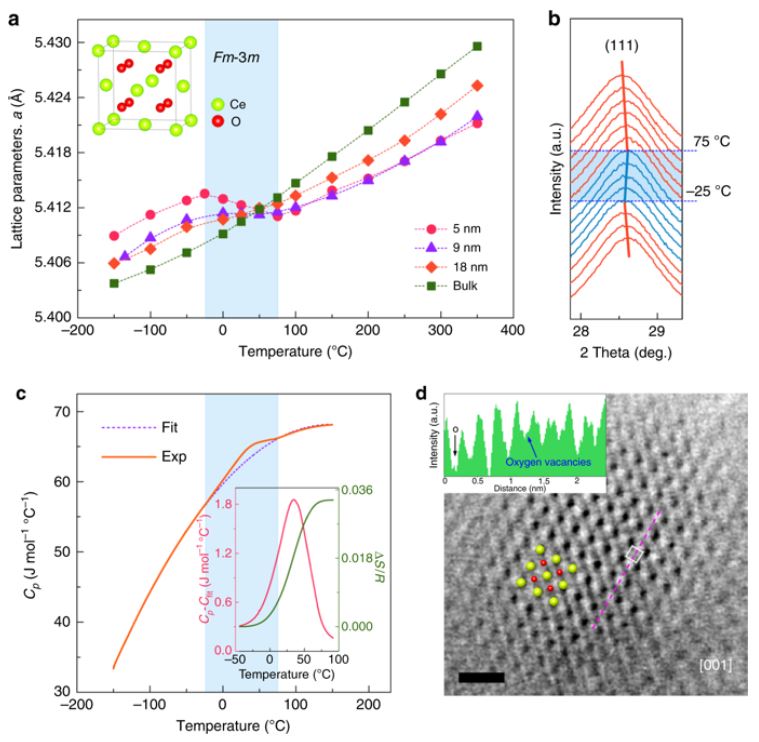Research Highlights
On Nov. 29, Nature Communications of the Springer-Nature Group published online the latest research results by professor Xianran He and his group on the phase transition in ceria, titled “Charge transfer drives anomalous phase transition in ceria.”
Ceria, a key rare-earth functional material, possess robust capabilities in oxygen storage/release, charge migration properties, and high thermal stability. It is widely used in fields such as energy, catalysis, machinery, electronics, and the environment. Ceria has been conventionally considered in a stable cubic (space group Fm-3m) phase, the volume of which increases with the temperature (positive thermal expansion). Dr. He Zhu of professor Xianran He’s group and other collaborators recently observed a negative thermal expansion when conducting nanocrystallization on ceria down to the size of 5 nm. Further experiments revealed that a phase transition occurs within the temperature range of negative thermal expansion (-25–75°C). The increase in temperature leads to a charge transfer from the oxygen vacancies to the Ce4f orbitals, resulting in a phase transition (as shown in Figure 1).

Figure 1 a. Temperature dependence of the lattice parameters extracted from X-ray diffraction Rietveld refinements for CeO2 at different sizes. b. Comparison of the (1 1 1) diffraction peaks of 5 nm ceria data at different temperatures. c. Specific heat capacity of 5 nm ceria measured from −150 °C to 150 °C. d. Annular bright-field (ABF) image with a common tilt axis of [0 0 1] for 5 nm ceria.
Local structure investigations using neutron total scattering PDF revealed a contraction of the nearest O–O atom-pair distance and a tetragonal-cubic phase transition as the temperature increases. At low temperature, the phase structure of ceria is tetragonal, with the space group p42/nmc (as shown in Figure 2). Raman scattering measurements and phonon dispersion calculations verified the reversible tetragonal (P42/nmc) to cubic (Fm-3m) phase transition. The discovery of the reversible phase transition in ceria and the local structure investigations provide a theoretical basis for the application of ceria in the fields of electronics, catalysis, and energy. Part of the work described in this paper was completed in collaboration with Beijing Institute of Technology, Argonne National Laboratory, Oak Ridge National Laboratory, Institute of Physics and Chemistry of the Chinese Academy of Sciences. In addition, this project was supported by the National Natural Science Foundation of China.